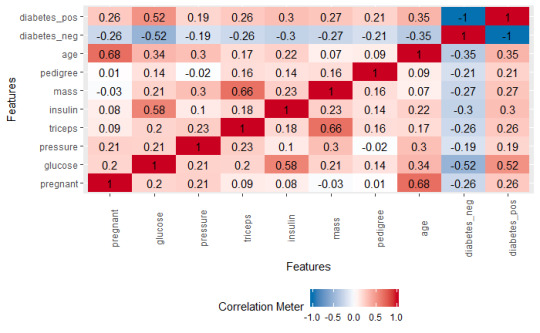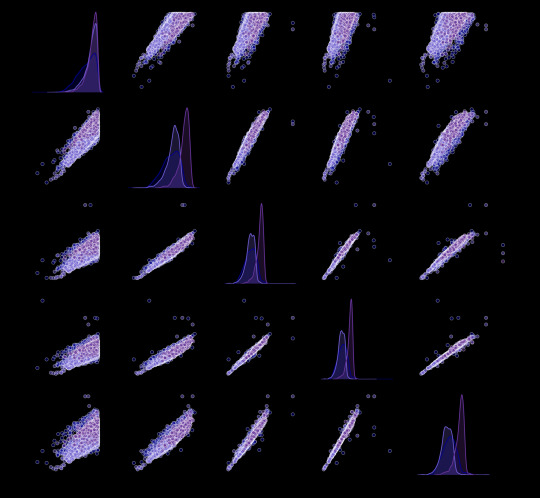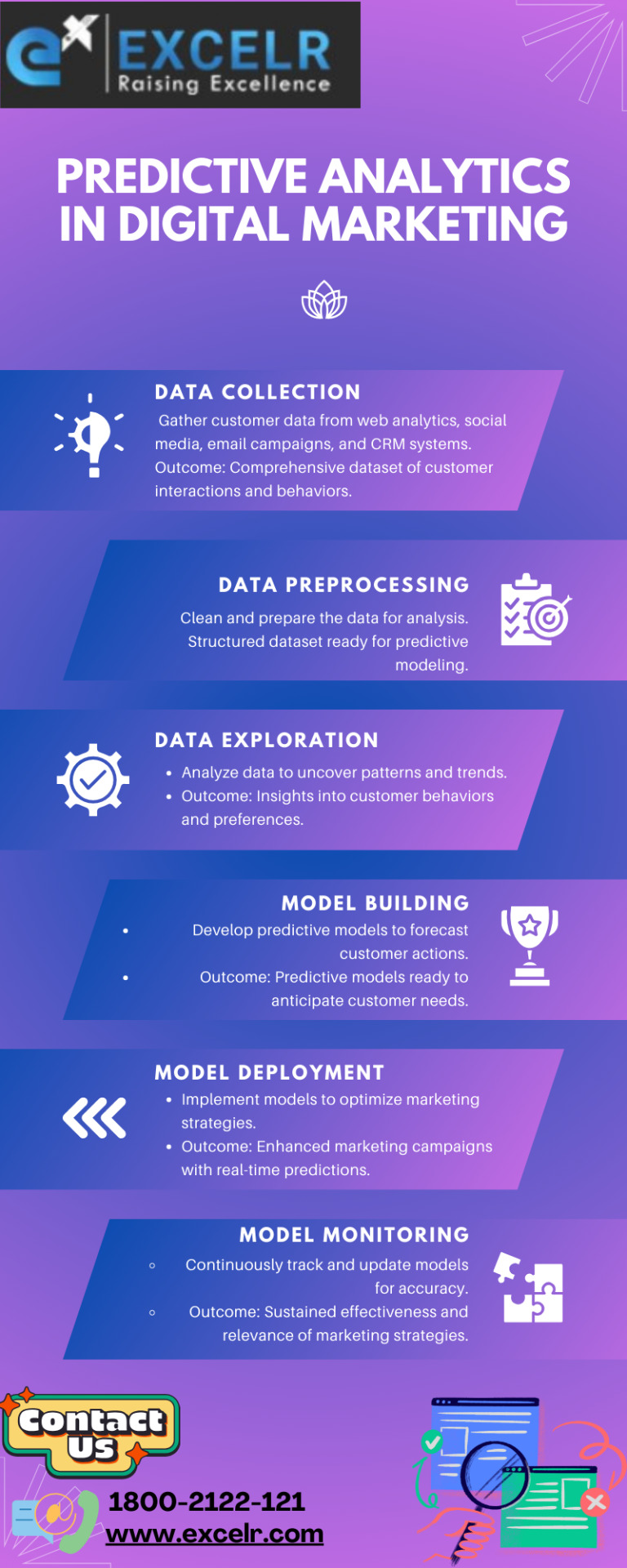#DataExplorer
Explore tagged Tumblr posts
Text
#GoogleTrends#SearchVolume#DataAnalysis#SEO#DigitalMarketing#KeywordResearch#OnlineTrends#DataExplained#OnlineInsights#SearchAnalytics#MarketingStrategy#SEOTools#TrendingTopics#KeywordAnalysis#OnlineMarketing#MarketResearch#SearchTrends#DataExploration#SearchData#OnlineVisibility
2 notes
·
View notes
Text
Azure Data Lake Benefits
Azure Data Lake Benefits
Azure Data Lake is a highly efficient and scalable storage system that helps organizations store and manage large amounts of data in a secure and organized way. It is especially beneficial for businesses looking to utilize big data and advanced analytics.
Here’s why Azure Data Lake is valuable:
Scalability: It can store massive amounts of data without performance issues, making it ideal for businesses with rapidly growing data needs.
Cost-Effective: It offers affordable storage options, allowing organizations to store data without high infrastructure costs.
Flexibility: Azure Data Lake supports different types of data, from structured to unstructured, meaning businesses can store a wide variety of data types without needing to organize or transform them beforehand.
Integration with Analytics Tools: It works seamlessly with other Azure tools, like machine learning and big data analytics platforms, which help companies process and analyze their data more effectively.
Security: Azure Data Lake comes with built-in security features, ensuring that the stored data is protected and only accessible to authorized users.
What is Data Lake?
A Data Lake is essentially a huge storage space where you can keep all types of data—whether it's organized, semi-organized, or completely unorganized—without worrying about how to structure it beforehand. This flexibility allows businesses to store a wide variety of data from various sources, such as IoT sensors, social media posts, website logs, and much more.
The key feature of a Data Lake is its ability to handle massive amounts of data, often referred to as "big data," in its raw form. This means that businesses don’t need to spend time and resources cleaning or organizing the data before storing it. Once the data is in the lake, it can be processed, analyzed, and turned into valuable insights whenever needed.
Data Lake in Azure
Azure Data Lake is a cloud storage solution offered by Microsoft Azure that enables businesses to store large amounts of data securely and efficiently. It’s designed to handle a variety of data types, from simple log files to complex analytics data, all within one platform.
With Azure Data Lake, organizations don’t have to worry about the limitations of traditional storage systems. It’s highly scalable, meaning businesses can store data as their needs grow without running into performance issues. It also offers high performance, so users can access and analyze their data quickly, even when dealing with large volumes.
Because it’s built on the cloud, Azure Data Lake is perfect for modern data needs, such as advanced analytics, machine learning, and business intelligence. Organizations can easily integrate it with other tools to derive valuable insights from their data, helping them make informed decisions and drive business success.
When to Use Data Lake?
Data Lakes are most useful when your business deals with large volumes of diverse data that don’t necessarily need to be organized before storing. If your data comes from multiple sources—like sensors, websites, social media, or internal systems—and is in raw or unstructured form, a Data Lake is the right tool to store it efficiently.
You should consider using a Data Lake if you plan to perform big data analytics, as it can handle vast amounts of information and allows for deeper analysis later. It's also ideal if you're looking to build real-time analytics dashboards or develop machine learning models based on large datasets, particularly those that are unstructured (such as text, images, or logs). By storing all this data in its raw form, you can process and analyze it when needed, without worrying about organizing it first.
Data Lake Can Be Utilized in Various Scenarios
Big Data Analytics: If your company handles large and complex datasets, Azure Data Lake is an ideal solution. It allows businesses to process and analyze these huge amounts of data effectively, supporting advanced analytics that would be difficult with traditional storage systems.
Data Exploration: Researchers and data scientists use Data Lakes to explore raw, unprocessed data. They can dig into this data to discover patterns, trends, or generate new insights that can help with building machine learning models or AI applications.
Data Warehousing: Data Lakes allow businesses to store both structured (like numbers in tables) and unstructured data (like social media posts or images). By combining all types of data, companies can create powerful data warehouses that provide deeper business insights, helping them make better decisions.
Data Archiving: Data Lakes also make it easy to store large amounts of historical data over long periods. Businesses can keep this data safe and easily accessible for future analysis, without worrying about running out of storage space or managing it in traditional databases.
Are Data Lakes Important?
Yes, Data Lakes are very important in today’s data-driven world. They provide businesses with a flexible and scalable way to store massive amounts of data without the constraints of traditional storage systems. As companies generate more data from various sources—such as websites, social media, sensors, and more—Data Lakes make it easier to store all that information in its raw form.
This flexibility is crucial because it allows organizations to store different types of data—structured, semi-structured, or unstructured—without having to organize or transform it first. Data Lakes are also cost-effective, offering a more affordable solution for handling big data and enabling organizations to analyze it using advanced tools like machine learning, AI, and big data analytics.
By tapping into the full potential of their data, businesses can gain deeper insights, make better decisions, and improve their overall performance. This is why Data Lakes are becoming a key component in modern data architecture.
Advantages of Data Lake
Scalability: Azure Data Lake makes it easy for businesses to scale their storage needs as their data grows. As companies collect more data over time, Data Lake can handle the increase in volume without impacting performance, allowing businesses to store as much data as they need.
Cost-effective: Storing data in a Data Lake is usually much more affordable than using traditional databases. This is because Data Lakes are designed to store massive amounts of data efficiently, often at a lower cost per unit compared to more structured storage solutions.
Flexibility: One of the key benefits of a Data Lake is its ability to store various types of data—structured (like numbers), semi-structured (like logs), and unstructured (like images or videos). This flexibility means organizations don't need to prepare or transform data before storing it, making it easier to collect and store diverse data from multiple sources.
Advanced Analytics: With all your data stored in one place, businesses can perform complex analytics across different types of data, all without needing separate systems for each data source. This centralized data storage makes it easier to analyze data, run reports, or build predictive models, helping organizations make data-driven decisions faster and more efficiently.
Limitations of Data Lake
Data Quality: Since Data Lakes store raw, unprocessed data, it can be difficult to ensure the quality and consistency of the data. Raw data may contain errors, duplicates, or irrelevant information that hasn't been cleaned up before being stored. This can make it harder to analyze and use the data effectively without additional processing or quality checks.
Complexity: Although Data Lakes are flexible, managing the large volumes of data they store can be complex. As the data grows, it can become challenging to organize, categorize, and secure it properly. This often requires advanced tools, sophisticated processes, and skilled personnel to ensure that the data remains accessible, well-organized, and usable.
Security: Data security can be another challenge when using a Data Lake, especially when handling sensitive or private data from multiple sources. Ensuring the right access controls, encryption, and compliance with regulations (such as GDPR) can be more complicated than with traditional storage systems. Without proper security measures, organizations may be at risk of data breaches or unauthorized access.
Working of Azure Data Lake
Azure Data Lake provides a unified storage platform that allows businesses to store vast amounts of data in its raw form. It integrates with other Azure services, like Azure Databricks (for data processing), Azure HDInsight (for big data analytics), and Azure Synapse Analytics (for combining data storage and analytics). This integration makes it easier to store, query, and analyze data without having to organize or transform it first.
The platform also provides tools to manage who can access the data, ensuring security protocols are in place to protect sensitive information. Additionally, it offers powerful analytics capabilities, enabling businesses to extract insights from their data and make data-driven decisions without the need for complex transformations.
Who Can Use Azure Data Lake?
Data Scientists and Engineers: These professionals often work with large, unprocessed datasets to develop machine learning models or perform complex data analysis. Azure Data Lake provides the flexibility and scalability they need to work with vast amounts of data.
Business Analysts: Analysts use Data Lakes to explore both structured (organized data) and unstructured (raw or unorganized data) sources to gather insights and make informed business decisions.
Developers: Developers can use Azure Data Lake to store and manage data within their applications, allowing for more efficient decision-making and better data integration in their products or services. This enables applications to leverage big data for improved performance or features.
Azure Data Lake Store Security
Azure Data Lake Storage offers several layers of security to protect data:
Encryption: All data is encrypted while being transferred and when it's stored, ensuring that it cannot be accessed by unauthorized individuals.
Access Control: The service integrates with Azure Active Directory (AAD) for authentication, and businesses can set up RBAC to ensure that only authorized users or systems can access certain data.
Audit Logs: Azure Data Lake generates audit logs that record every action taken on the data, allowing organizations to track who accessed or modified the data. This feature helps maintain security and ensures compliance with regulations.
Components of Azure Data Lake Storage Gen 2
Containers: These are like storage units where data is organized. Containers are used to store blobs (data files) within Azure Storage.
Blobs: These are the actual data files or objects stored within containers. Blobs can be anything from text files to images, videos, or log files.
Folders: Within containers, data can be organized into folders (or directories) and subfolders, making it easier to access and manage large volumes of data.
Need of Azure Data Lake Storage Gen 2
Azure Data Lake Storage Gen2 is needed because businesses and organizations are dealing with an increasing amount of data, both structured and unstructured. Storing and processing such large volumes of data requires a storage solution that is both scalable and flexible. Azure Data Lake Storage Gen2 enables this by offering a secure, scalable way to store data, while also providing powerful tools for advanced analytics and machine learning. The combination of Blob Storage's efficiency and Data Lake's enhanced features allows businesses to extract more value from their data.
#AzureDataLake#BigData#CloudStorage#DataAnalytics#MachineLearning#DataScience#AzureStorage#DataSecurity#BigDataAnalytics#CloudComputing#DataLakeStorage#DataManagement#DataArchiving#AdvancedAnalytics#BusinessIntelligence#AzureGen2#DataIntegration#DataExploration#DataPrivacy#ScalableStorage#DataProtection#DataLakeSecurity
0 notes
Text
Modern Data Science with SAS Viya & Python for Churn Models | CoListy
Learn data science with SAS Viya & Python to predict churn, manage data, deploy models, & use GitHub for collaboration.
#freeonlinelearning#colisty#courselist#moderndatascience#sasviyaworkbench#predictiveanalytics#dataengineering#machinelearning#customerchurnprediction#pythonandsasintegration#dataexploration#datatransformation#clouddataanalytics#versioncontrol#datasciencecourses#datalakehouseaccess#real-timepredictions#visualstudiocodeintegration
1 note
·
View note
Text
#Tableau#DataVisualization#BusinessIntelligence#DataAnalytics#DataScience#DataDriven#DataTools#DataAnalyst#BusinessAnalyst#DataVisualizationTools#DataExploration#DataInsights
0 notes
Text
Predictive Analytics in Digital Marketing: Leveraging Data for Strategic Advantage
In the fast-paced world of digital marketing, understanding and anticipating customer behavior is crucial. Predictive analytics has emerged as a game-changer, empowering marketers to forecast future trends and optimize their strategies with precision. By harnessing the power of data-driven insights, businesses can enhance their marketing effectiveness and deliver personalized experiences that resonate with their audience.
Unveiling Predictive Analytics
Predictive analytics involves analyzing historical data, statistical algorithms, and machine learning techniques to predict future outcomes. In digital marketing, this means using past customer interactions, purchase patterns, and demographic data to foresee how customers might behave in the future. This proactive approach allows marketers to tailor their campaigns and strategies based on predictive insights, ultimately driving better results and ROI.
The Six Phases of Predictive Analytics in Digital Marketing
Data Collection: The journey begins with collecting data from various sources like website traffic, social media engagements, email interactions, and customer databases. This diverse dataset forms the foundation for predictive modeling by capturing comprehensive insights into customer preferences and behaviors.
Data Preprocessing: Once collected, the raw data undergoes preprocessing. This crucial step involves cleaning, transforming, and integrating the data to ensure accuracy and consistency. By addressing data inconsistencies and preparing it for analysis, marketers can derive meaningful insights that guide strategic decisions.
Data Exploration: In this phase, data analysts delve deep into the dataset to uncover hidden patterns and correlations. Through advanced analytics and visualization tools, they identify trends, customer segments, and predictive indicators that shape future marketing initiatives. This exploration phase is pivotal in gaining a nuanced understanding of customer behavior and market dynamics.
Model Building: Armed with insights from data exploration, marketers proceed to build predictive models. These models utilize sophisticated algorithms such as regression analysis and machine learning to forecast outcomes. By training these models on historical data and validating their accuracy, marketers can confidently predict customer responses and preferences in real-time scenarios.
Model Deployment: Once validated, predictive models are deployed into marketing strategies and operational workflows. Whether optimizing ad campaigns, personalizing content, or recommending products, these models enable marketers to deliver hyper-targeted experiences that resonate with individual customer needs. This deployment phase bridges predictive insights with actionable outcomes, driving tangible business results.
Model Monitoring and Refinement: Predictive analytics is an iterative process that requires continuous monitoring and refinement. Marketers closely monitor model performance, update algorithms with new data inputs, and recalibrate strategies based on evolving market dynamics. This proactive approach ensures that predictive models remain accurate, relevant, and responsive to changing customer behaviors and industry trends.
The Impact of Predictive Analytics on Digital Marketing
Enhanced Customer Engagement: By anticipating customer needs and preferences, predictive analytics enables personalized marketing strategies that foster deeper engagement and loyalty.
Optimized Marketing Spend: Through predictive modeling, marketers allocate resources more efficiently, focusing on channels and campaigns that yield the highest returns and conversions.
Strategic Decision-Making: Armed with predictive insights, businesses make informed decisions that drive growth, innovation, and competitive advantage in saturated markets.
Conclusion
Predictive analytics represents a paradigm shift in digital marketing, empowering businesses to anticipate, adapt, and innovate in response to customer demands. By embracing the six phases of data collection, preprocessing, exploration, model building, deployment, and refinement, marketers can harness the transformative power of predictive analytics to achieve sustainable growth and exceed customer expectations in today's dynamic marketplace. As technology continues to evolve, predictive analytics remains a cornerstone of strategic marketing efforts, paving the way for future success and market leadership.
#DataCollection#CustomerData#DigitalMarketing#DataCleaning#DataPreparation#DataQuality#DataExploration#CustomerInsights#DataAnalysis#ModelBuilding#PredictiveModels#MachineLearning#ModelDeployment#MarketingOptimization#RealTimeMarketing#ModelMonitoring#ContinuousImprovement#MarketingEfficiency#gene
0 notes
Text

We delved into New York using POI data, revealing social insights and business trends:
Starbucks strategically clusters near transport hubs. Dunkin Donuts dominates. Rockefeller Center is busy Mondays, Times Square surges. Cultural expressions in Jamaica and China. Gucci outlets align with luxury zones.
For more information, https://hirinfotech.com/points-of-interest-datasets/ or contact us at [email protected]
0 notes
Text
youtube
Citizen Gain: Exploring Data for Systems Change | Tackle the limitations of public data
Delve into the power of data for societal transformation! Join us in "Citizen Gain" as we navigate through the challenges and possibilities of leveraging public data for meaningful systems change. Uncover insights, tackle limitations, and discover the potential to reshape our communities through informed action.
0 notes
Text
Huh, this is a pretty cool idea. They want to figure out the internal representation in a large language model, in this case to find some internal state that classifies sentences as true or false. But how do you fish that out of the five thousand-element vector at a given layer?
Well, they feed it a ton of sentences which look exactly the same except that some are true and some are false: The city of Kyoto is in Japan The city of New York is in India The city of Gold Coast is in China etc etc and do PCA on the resulting vectors. Since the only variation is in the true/false values, they get two principal components that separate true and false sentences. Then if you project other sentences like "Quinoa is not a grain but actually a cabbage" or "the domestic dog is the most common pet in the world" into the same basis, they still fall into the same true/false regions.
19 notes
·
View notes
Text
" Mastering DAX: Unlocking the Power of Advanced Data Analytics "
" Mastering DAX: Unlocking the Power of Advanced Data Analytics "
https://www.udemy.com/course/pl-300-microsoft-power-bi-data-analyst-certification-2024/?couponCode=7B13AB8EAC2516DC7634
Are you ready to transform raw data into actionable insights?
🚀 Join our Microsoft Power BI Course and gain the skills you need to create stunning, interactive dashboards and reports that drive smarter business decisions.
💡 What You’ll Learn:
✅ Master the Power BI interface and tools ✅ Connect and transform data from multiple sources ✅ Build visually compelling dashboards and reports ✅ Use DAX to perform advanced calculations ✅ Share and collaborate on insights in the Power BI service
🎯 Who Should Enroll?
This course is perfect for:
Aspiring data analysts Business professionals seeking data-driven decision-making skills Students and graduates wanting to boost their resumes
📅 Course Details:
Duration: 2 Hours Mode: Online/In-person Start Date: Anytime
🔥 Why Choose Us?
Expert trainers with real-world experience Help for real certification exam.
📌 Reserve Your Spot Now! Transform your career and become a data visualization expert. 💼
👉 PL-300: Microsoft Power BI Practice Test - 2024 (Practice only no certification)
Don’t wait—spaces are filling fast!
📊 #PowerBI #DataAnalytics #BusinessIntelligence #PowerBITraining #MicrosoftPowerBI #DataVisualization #BusinessIntelligence #DataAnalytics #DataDriven #BItools #Analytics #DataScience #DataInsights #PowerBIReports #DataStorytelling #DataDashboards #VisualizeData #PowerBICommunity #DataEngineer #SelfServiceBI #DataAnalysis #BusinessAnalytics #DashboardDesign #DataReporting #DataVisualizationTools #DataStrategy #DataVisualizationDesign #PowerBIDesktop #PowerBIDashboards #PowerBITraining #DataVisualizationTips #DataCulture #AdvancedAnalytics #DataManagement #PowerBIDeveloper #InteractiveData #BIAnalytics #PowerBIExperts #MicrosoftBI #DataDrivenDecisions #AIAndBI #DataIntegration #PowerBIPro #BusinessData #DataExploration #TechWithData #PowerBIProjects #DataPerformance #DataWithPowerBI #BIConsulting #PowerBIDevelopment #DynamicData #RealTimeBI #BIVisualization #CustomDashboards #DataAutomation #PowerPlatform #ModernBI #DataJourney #TechForBusiness #BIForBusiness
0 notes
Text
The Geometry of Truth: Do LLM's Know True and False
https://saprmarks.github.io/geometry-of-truth/dataexplorer/
0 notes
Photo

library(DataExplorer) plot_correlation(df)
0 notes
Text
Statistics is a common language of all data explorations happening around us.
2 notes
·
View notes
Link
Today, KnowledgeHound, the only search-based analytics solution in the world designed for survey data, announced the release of its most-requested product, which is called Rapid Reports. Whether you need full crosstabs or want to zoom in on a specific visualization of your data, Rapid Reports by KnowledgeHound is designed to fit into your existing workflow. This is the case whether you need full crosstabs or not.
#dataexploration#dataanalyst#dataanalysis#dataanalytics#datapipeline#datadiscovery#datascientist#databasemanagement#datavisualization#dataaccess
0 notes
Photo

Increase your Employability Quotient by utilising the opportunity available through Lockdown. NIIT is pleased to offer a demo class to all the aspiring students on its digital platform topic being “Programming in JAVA”. Use this opportunity and book your seat immediately by calling us / sending WhatsApp message on 7044339988. NIIT is pleased to offer a demo class to all the aspiring students on its digital platform topic being “Programming for Python with Data Exploration”. Use this opportunity and book your seat immediately by calling us / sending WhatsApp message. visit www.niit.com for more details. #NIITonlineClasses #DigitalClassroom #StayHome #StaySafe #FollowLockdown #BeatCOVID19 #BeatCorona #LearnWhatMatters #StayAhead #Python #DataExploration #Programming #JAVA visit www.niit.com for more details. https://www.instagram.com/p/CAKIveWpy7e/?igshid=y0r717wycijy
#niitonlineclasses#digitalclassroom#stayhome#staysafe#followlockdown#beatcovid19#beatcorona#learnwhatmatters#stayahead#python#dataexploration#programming#java
0 notes
Photo

Data Exploration of the Sloan Digital Sky Survey Data explorations examining the correlations between various wavelengths of light from galaxies, stars and quasars. Model made with Random Forest classifier.
Data from the Sloane Digital Star Survey
0 notes
Text

#DataCollection#CustomerData#DigitalMarketing#DataCleaning#DataPreparation#DataQuality#DataExploration#CustomerInsights#DataAnalysis#ModelBuilding#PredictiveModels#MachineLearning#ModelDeployment#MarketingOptimization#RealTimeMarketing#ModelMonitoring#ContinuousImprovement#MarketingEfficiency
0 notes